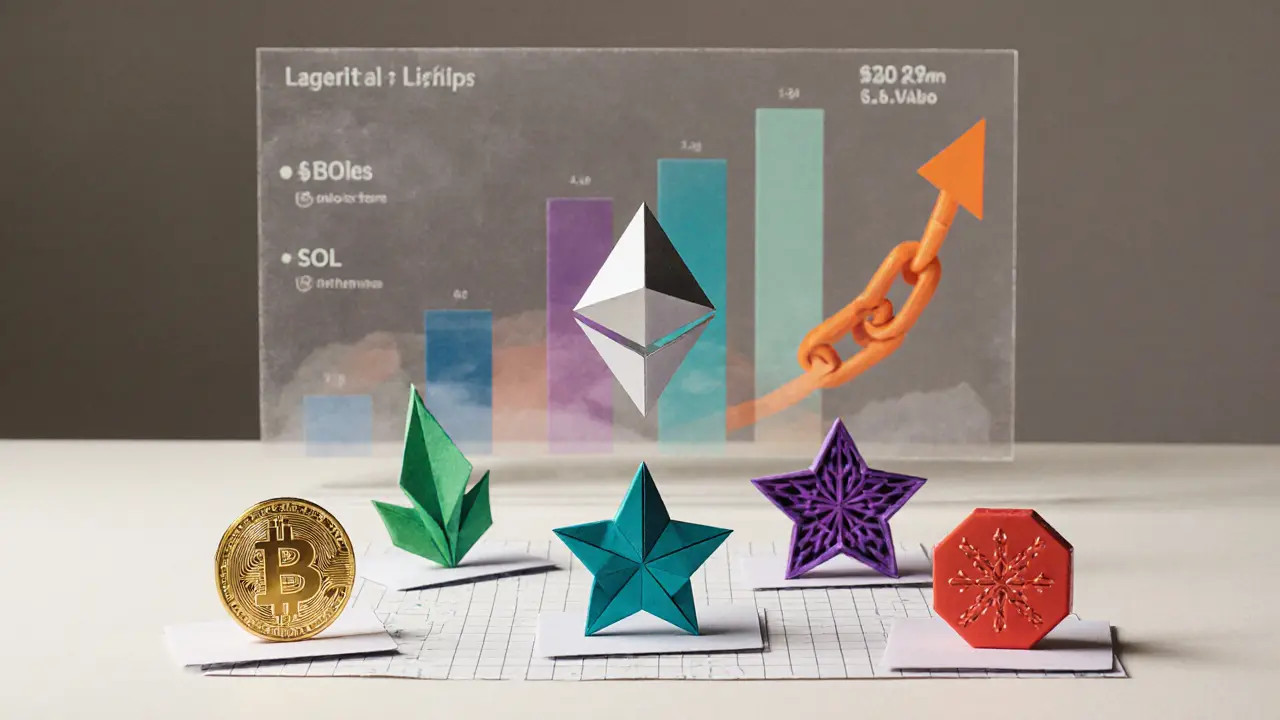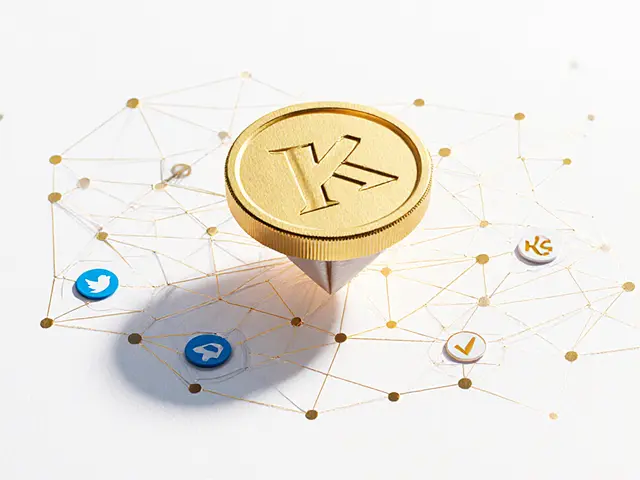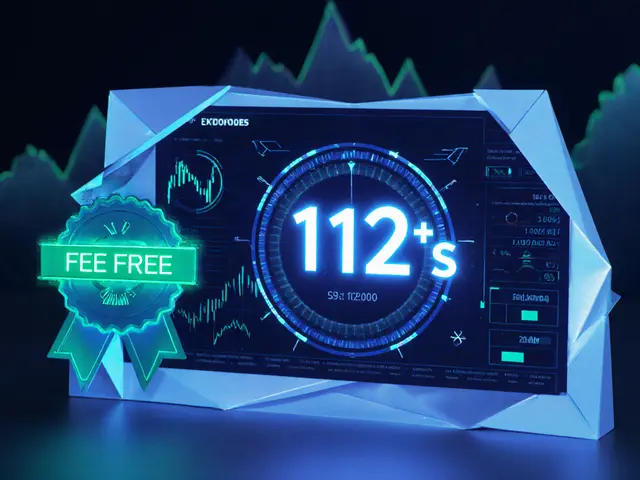Cryptocurrency DCA Calculator
When it comes to building a crypto portfolio without chasing every market hype, Dollar‑Cost Averaging is a systematic approach that spreads out purchases over time, reducing the impact of short‑term volatility. By sticking to a fixed dollar amount each week or month, you let price swings work in your favor. The key question most investors face is: which digital assets actually make sense to DCA? Below you’ll find the criteria, a ranked list of the best cryptocurrencies for DCA, and a step‑by‑step guide to get you investing today.
Quick Takeaways
- DCA works best with mature, high‑market‑cap coins that have survived multiple cycles.
- Bitcoin and Ethereum remain the backbone of any DCA plan.
- Layer‑1 platforms (BNB, Cardano, Solana) add diversification without excessive risk.
- Automation tools (exchange recurring buys, third‑party bots) keep you on schedule.
- Commit to at least 2‑3 years to reap the averaging benefit.
Why Dollar‑Cost Averaging Still Beats Timing the Market
Imagine you have $50,000 to invest in Bitcoin over five months, buying $10,000 each month at prices of $50k, $45k, $25k, $25k and $55k. Your average cost base becomes $40k and you end up with 1.4BTC instead of the 1BTC you’d get from a single lump‑sum purchase. The math works the same for any crypto: the lower the price during a purchase, the more tokens you receive, pulling the overall cost down.
Kraken’s 2024 DCA survey showed that 59% of crypto investors name DCA as their primary tactic, proving its practicality beyond theory. The psychological upside is just as big - you remove the stress of “buy the dip” and avoid the paralysis that comes from daily news cycles.
How to Pick the Right Coins for a DCA Portfolio
Not every token belongs in a long‑term, systematic plan. Here are the three filters most analysts use in 2025:
- Market Maturity: Coins with at least $10billion market cap and three or more full market cycles.
- Network Utility: Strong developer activity, real‑world use cases, and a growing ecosystem.
- Liquidity: Daily trading volume high enough to execute regular buys without slippage.
Applying these filters narrows the field to a handful of proven assets.
Top Cryptocurrencies for DCA in 2025
Below is the shortlist that meets the three filters and adds a layer of diversification across different blockchain purposes.
| Coin | Market Cap (USD) | Primary Use Case | Avg Daily Volume (USD) | Why It Fits DCA |
|---|---|---|---|---|
| Bitcoin digital gold, store of value | $1.2T | Store of value & settlement | $40B | Largest liquidity, proven resilience, long‑term upside. |
| Ethereum smart‑contract platform powering dApps | $540B | DeFi, NFTs, enterprise apps | $35B | Broad ecosystem, continuous upgrades (e.g., zk‑rollups) fuel growth. |
| Binance Coin (BNB) utility token for Binance ecosystem | $80B | Exchange fee discounts, BNB Chain contracts | $5B | High usage on the world’s biggest exchange, solid liquidity. |
| Cardano (ADA) proof‑of‑stake platform focused on peer‑reviewed research | $15B | Academic‑grade smart contracts, sustainability | $1.2B | Steady developer growth, low volatility compared to newer altcoins. |
| Solana (SOL) high‑throughput chain for DeFi & NFT projects | $12B | Fast, low‑cost transactions | $1.5B | Attractive for investors who want exposure to ultra‑fast scaling solutions. |
| Polkadot (DOT) interoperability protocol linking multiple blockchains | $9B | Cross‑chain communication | $800M | Unique niche, growing parachain ecosystem, moderate volatility. |
| Chainlink (LINK) decentralized oracle network | $7B | Off‑chain data for smart contracts | $600M | Core infrastructure, essential for DeFi data feeds. |
These seven coins cover the three main blockchain pillars: store of value (Bitcoin), programmable contracts (Ethereum, Cardano, Solana), and cross‑chain or oracle services (Polkadot, Chainlink). Adding a handful of them to a DCA plan spreads risk while still focusing on proven, high‑liquidity assets.

Setting Up Your DCA Routine
Once you’ve selected the coins, the next step is turning the plan into a habit.
- Define Your Budget: Decide how much of your monthly cash flow you can allocate. A common rule is 5‑10% of net income.
- Pick a Frequency: Weekly, bi‑weekly, or monthly purchases all work. Weekly gives more granularity; monthly is simpler.
- Choose an Exchange: Platforms like Coinbase, Kraken, and Binance all support recurring buys. Look for low fees and robust security.
- Automate the Process: Enable “recurring purchase” settings or use third‑party bots such as AlgosOne, 3Commas, or Crypto.com Auto‑Invest.
- Monitor Quarterly: Review allocation every three months to ensure you’re staying within your risk tolerance. Re‑balance only if a single coin exceeds 40‑45% of the total DCA portfolio.
Consistency is the only factor that truly matters. Even when the market drops 30% in a week, your automated schedule will keep buying, turning that dip into a cheaper average cost.
Risks, Limitations, and How to Mitigate Them
DCA isn’t a magic bullet. Here are the main downsides and practical ways to handle them:
- Rising Bull Markets - If prices keep climbing, you’ll purchase at progressively higher levels. Mitigation: Keep an eye on long‑term trend; consider a one‑time “top‑up” when the market shows signs of over‑extension.
- Low Volatility Periods - Flat markets yield little averaging benefit. Mitigation: Extend the DCA horizon; you’ll still capture the next cycle’s swings.
- Opportunity Cost - You’re always long; you miss short‑selling chances. Mitigation: Allocate a small separate “speculative” fund for tactical trades.
- Fee Drag - Frequent small purchases can accumulate fees. Mitigation: Choose exchanges with zero‑fee recurring buys or use platforms offering fee rebates for native token holders (e.g., BNB on Binance).
Automation Tools Worth Considering in 2025
Manually setting up a $100 purchase each week can become tedious. Here are three tools that integrate with most major exchanges:
- AlgosOne - Offers 24/7 monitoring, custom DCA scripts, and optional “price‑trigger” tweaks.
- 3Commas SmartTrade - Combines recurring buys with automated stop‑loss/take‑profit bundles.
- Crypto.com Auto‑Invest - Simple UI, zero‑fee for up to 10% of portfolio value.
All three let you set a maximum daily spend, ensuring you never exceed your budget even if a market crash triggers multiple buy orders.
Long‑Term Outlook: What to Watch for After 2025
As institutional money keeps flowing into crypto, the assets that survive will likely be those with strong governance, clear regulatory compliance, and real‑world demand. Keep an eye on:
- Upgrade roadmaps (Ethereum’s “sharding” phases, Cardano’s Alonzo roll‑out).
- Regulatory clarity in major economies (EU’s MiCA, US SEC guidance).
- Ecosystem health metrics: active developers, transaction counts, and on‑chain activity.
Updating your DCA list every 12‑18 months based on these signals helps you stay aligned with the evolving crypto landscape.
Frequently Asked Questions
Can I DCA with stablecoins?
Stablecoins are great for parking cash while you decide on your next allocation, but they don’t benefit from price averaging because their value stays near $1. Most DCA investors use them only as a temporary buffer.
How often should I rebalance my DCA portfolio?
A quarterly check‑in is usually enough. If any single coin exceeds roughly 40‑45% of the total allocation, consider shifting a portion to under‑weighted assets.
Do I need a separate wallet for DCA purchases?
Most exchanges let you keep the assets on‑platform, which simplifies recurring buys. For long‑term security, transfer the accumulated tokens to a hardware wallet once you hit a comfortable balance.
What if the market enters a prolonged bear phase?
That’s actually when DCA shines. You keep buying at lower prices, which lowers your average cost. Stick to the plan for at least 2‑3 years; the recovery usually follows a bear cycle.
Is it worth adding a small portion of high‑risk altcoins?
If you have a separate speculative budget (5‑10% of total crypto holdings), a modest allocation to promising low‑cap projects can boost upside. Keep the core DCA list large‑cap and stable.





Matt Nguyen
While the article dutifully outlines the DCA methodology, it neglects to address the nuanced macro‑economic forces that subtly erode even the most disciplined portfolios. One cannot simply ignore the looming specter of fiat devaluation, which, I assert, is a silent tax on any crypto accumulation strategy. Moreover, the piece fails to compare the tax efficiencies of staking versus pure DCA, an oversight that betrays a superficial understanding of asset‑class dynamics. In sum, the guide is well‑intended, yet woefully incomplete for the discerning investor.
Rob Watts
Stick to a schedule and watch the compounding work
Bhagwat Sen
Yo, DCA is like a Netflix binge for your crypto wallet-keeps the hype at bay while you steadily collect the good stuff. Also, have you considered sprinkling a few layer‑2 tokens into the mix? They can boost overall returns without adding much risk.
Cathy Ruff
Honestly this list is missing the point. You can’t just throw in any altcoin and hope for the best. Stick to the heavyweights or you’ll end up with a bag of regret.
Amy Harrison
Great list! Adding a sprinkle of optimism to your DCA plan can really boost morale 😊. Remember, consistency beats perfection every time.
Adarsh Menon
Sure, DCA works until the market decides to zero‑out everything – then good luck.
Laurie Kathiari
Look, the article’s advice feels like a warm‑fuzzy bedtime story for crypto newbies, but real investors need hard data, not just pretty tables. If you want credibility, cite on‑chain metrics and developer activity. Otherwise, it’s just another fluff piece.
Jim Griffiths
For anyone new to DCA, start small and increase as you gain confidence. Keep track of average cost per token to see the strategy work over time.
Promise Usoh
While the outlined steps are succinct, a note on tax‑lot identification would enhance utility. Additionally, consider the impact of transaction fees on marginal returns.
Lurline Wiese
Did someone actually think repeating the same purchase every month is exciting? Please! The real drama is watching the price swing like a roller coaster. If you can survive the nausea, maybe you’ll get a decent ROI.
Jenise Williams-Green
Oh please, the article pretends to be neutral while secretly pushing BNB like a corporate ad. Wake up, people!
Kortney Williams
I appreciate the thoroughness, but I’d also add a brief note on the psychological benefits of DCA. It can reduce stress for risk‑averse investors.
Taylor Gibbs
Hey folks, DCA is like planting seeds-you water them regularly and hope they grow. Don’t forget to check the health of the soil (i.e., exchange security) before you start planting.
Eva Lee
The strategic allocation matrix should incorporate risk‑adjusted return metrics such as Sharpe ratio. Otherwise, you’re just eyeballing market cap.
stephanie lauman
It’s obvious the author has been fed propaganda by the big exchanges. The “recurring buys” feature is a surveillance tool, not a convenience. Wake up and smell the hidden fees.
Twinkle Shop
First and foremost, I must commend the original poster for assembling a concise overview of DCA practices, which serves as a valuable entry point for both novices and seasoned investors alike. However, it is imperative to delve deeper into the structural underpinnings that dictate the efficacy of such a strategy in the current market climate. One critical aspect that merits attention is the interplay between liquidity depth and slippage, especially when executing recurring purchases on lower‑volume exchanges. Moreover, the tax implications of frequent small transactions can erode the net gains, a nuance often overlooked in generalized guides.
In addition, the evolving regulatory landscape-particularly the recent EU MiCA framework-introduces compliance considerations that could affect the accessibility of certain assets for automated DCA. It is also worth mentioning that the emergence of layer‑2 solutions, such as Optimism and Arbitrum, provides opportunities to reduce transaction costs while maintaining exposure to core assets.
From a portfolio construction perspective, diversification across multiple blockchain ecosystems, as outlined in the article, is sound, yet one should also weigh the correlation coefficients between assets to avoid unintended concentration risk. For instance, while Bitcoin and Ethereum often serve as anchors, their price movements can be highly correlated during macro‑economic stress events.
Finally, the psychological dimension of steadfastly adhering to a DCA regimen cannot be overstated. Behavioral finance research underscores that disciplined, periodic investing mitigates the impact of emotional decision‑making, thereby enhancing long‑term outcomes.
In conclusion, while the guide provides a solid foundation, integrating these additional layers of analysis will empower investors to refine their DCA frameworks and better navigate the complexities of the modern crypto ecosystem.
Greer Pitts
Yo, just set up auto‑buy on your exchange and let the bots do the heavy lifting. It’s that simple.
Cynthia Rice
Even a toddler could set up a recurring buy, honestly.
Shaian Rawlins
DCA is a solid long‑term approach, especially for investors who struggle with timing the market. By establishing a regular purchase cadence, you automatically buy more when prices dip and less when they rise, which smooths out volatility over time. This method also helps mitigate emotional decision‑making, a common pitfall that leads many to sell at the bottom of a downturn. It’s crucial, however, to select assets with sufficient liquidity and genuine utility to ensure your holdings retain value.
When constructing a DCA portfolio, start with the tried‑and‑true options like Bitcoin and Ethereum, as they provide the most robust network effects and institutional support. From there, consider adding layer‑1 platforms such as Solana and Cardano to diversify exposure across different scaling solutions.
Another important factor is fee management. Frequent small trades can accumulate significant fees, so opting for exchanges that offer zero‑fee recurring buys or using native tokens for fee discounts (e.g., BNB on Binance) can preserve your returns.
Lastly, maintain a disciplined review schedule-quarterly checks are typically sufficient-to ensure your allocations remain aligned with your risk tolerance and investment horizon. Adjustments should be modest; the power of DCA lies in its consistency, not in constant rebalancing.
Tyrone Tubero
Yo, if you’re not DCA‑ing Bitcoin, you’re basically throwing cash into a black hole. Get it together.
Miranda Co
Don’t let anyone tell you DCA is “boring”; it’s the most reliable way to build wealth in crypto. If you’re serious, start now and stay the course.